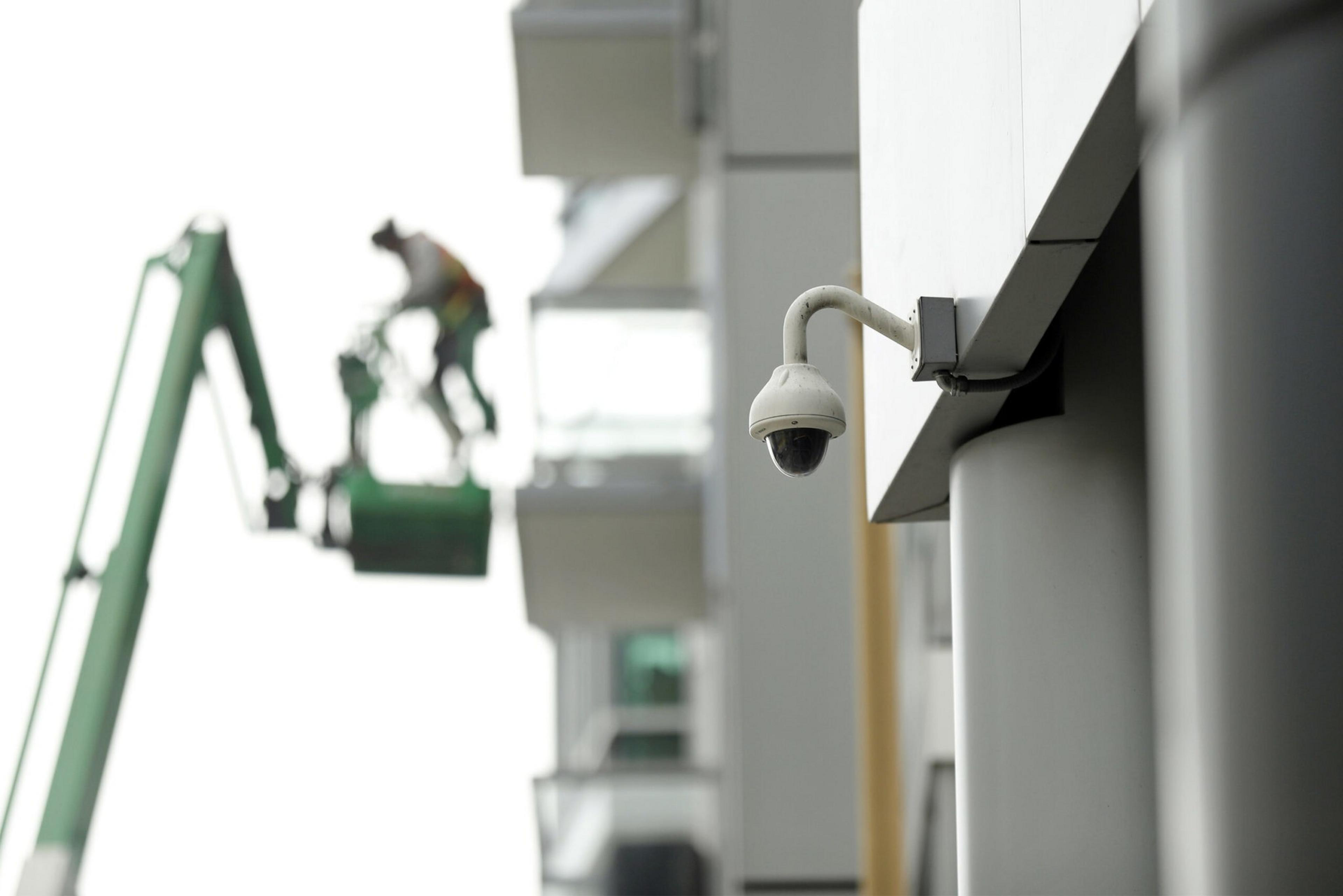Stunt drivers burning rubber in the dead of night as throngs of onlookers stand dangerously close. An 84-year-old Thai grandfather forcefully pushed to his death while enjoying a morning walk. A group of teens beating a 70-year-old Asian woman in the lobby of her apartment building.
San Francisco police are citing such attention-grabbing crimes as reasons why City Hall should boost law enforcement access to privately owned surveillance cameras popping up around town.
But lost in the conversation so far, with a consequential vote on the proposal looming at the Board of Supervisors on Tuesday, is the growing size of the camera networks that SFPD wants to access in real time—and the willingness of their owners to let police use them.
New reporting by The Standard shows how the plan could unlock hundreds of cameras for live monitoring by SFPD. The cameras are run by five local property owner groups, known as community benefit districts or CBDs, and largely funded by one person: cryptocurrency billionaire Chris Larsen.
The business districts operate close to 1,000 cameras, depending on how they’re counted. Some of the high-tech cameras include multiple sensors within a single dome that each provide a different view.
Police already access footage from these cameras to help solve crimes after they occur, but are not typically allowed to view the footage in real time.
The proposal would let police live monitor these video feeds for three reasons (opens in new tab): during a life-threatening emergency, to redeploy officers during a mass event and during a criminal investigation with written approval from a captain.
All police would need is the camera owner’s consent.
‘A Force Multiplier’
Reached by The Standard, two of the community benefit districts that operate cameras expressed interest in letting police live-monitor their video feeds, pending approval from their governing boards.
Both districts, in Fisherman’s Wharf and Mid-Market, argued that live access to the cameras could help SFPD supplement its dwindling staffing numbers.
“It’s a force multiplier and right now we need all the help we can get,” said Randall Scott, who runs the Fisherman’s Wharf CBD and controls cameras pointed in more than 30 different directions around the tourist area.
Scott said police could use the cameras to passively track an auto burglary crew across the city and wait for the right time to make an arrest.
“With so many fewer officers, the easier we can make their job the better,” said Tracy Everwine, head of the Mid-Market CBD. Her association has cameras in 11 locations pointing in 100-plus directions.
A third CBD, the Union Square Alliance, already gave police live access to its cameras in 2020 after a day of protests over the police killing of George Floyd gave way to a night of looting, sparking a lawsuit that police ultimately won. The group runs the largest of the networks, with more than 400 cameras keeping an eye on the tourist shopping destination.
‘Next-Level City Surveillance’
While proponents see the crime-fighting value in increasing police access to these camera networks, surveillance experts worry that the proposal will give the government a license to run roughshod over people’s civil liberties.
Andrew Ferguson, a law professor at American University Washington College of Law and expert on police surveillance, said there is a vast difference between a private person using a camera network to do store security, for instance, and police gaining live access to a network.
The distinction is that police can infringe on a person’s rights by following as they go about their daily life—to religious centers or protests, for example.
“Giving police access with only weak police-controlled limitations means you are flipping an on-switch into next-level city surveillance,” he said.
Ferguson said the proposal might be received more critically if the police sought to set up its own citywide, public-facing camera system, rather than seeking live access to an already established privately run network.
“By outsourcing surveillance to businesses and getting the cameras without cost, police have escaped the usual forms of formal accountability,” he said.
Jennifer Jones, a technology and civil liberties attorney at the ACLU of Northern California, said the provision allowing police to access live cameras for a criminal investigation was particularly ripe for abuse.
She said it was so broad that even a minor offense “could be used for justification for sweeping live surveillance.”
Only one of the districts that controls a surveillance network, the Tenderloin CBD, said it would not consider giving police real-time access to its cameras. The group currently bars live access for police and is “not changing the policy,” Tenderloin CBD representative Phoeut Tak said.
The fifth CBD that runs a network, in Japantown, did not respond to requests for comment. The district controls 120 cameras throughout the six-block area, according to a report from the organization last year.
While a sixth CBD, Lower Polk, also has cameras, its network is considerably smaller than the rest and was not funded by the same donor.
The proposal heads to the full Board of Supervisors for a vote Tuesday afternoon after clearing the board’s Rules Committee last week in a 2-1 vote.
Proponents of the legislation, which is sponsored by Mayor London Breed, have tried to strike a balance between civil liberties concerns and giving police a tool to fight crime. They also included a 15-month sunset provision and a requirement that SFPD publicly report on its live video usage.
Supervisor Connie Chan cast the dissenting vote at committee. She said she would prefer more police patrols over live surveillance.
“To say that this is somehow an additional tool that will make us safer,” she said, “I have doubts.”
